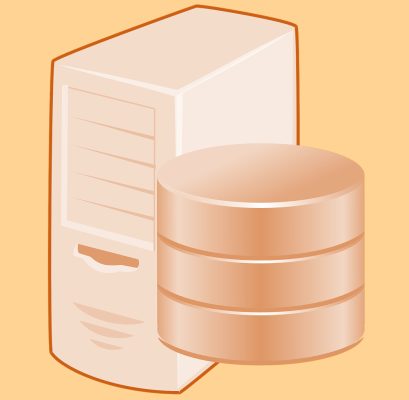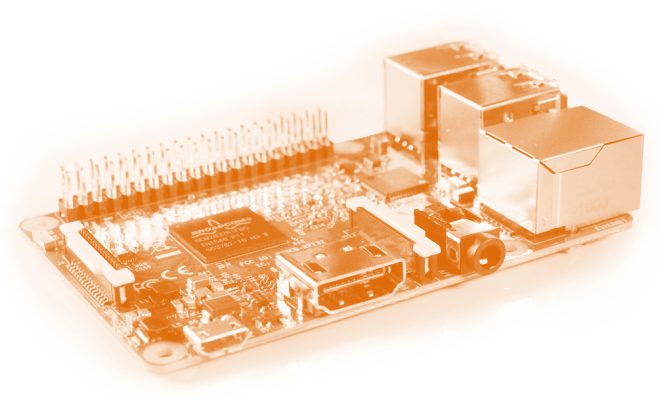As energy costs have risen and the green movement has gained traction in recent years, we’ve seen a proliferation of interest in reducing energy consumption. Smart devices in the Internet of Things (IoT) have significantly improved the landscape of managing energy consumption and disrupted the energy industry.
Smart buildings with built-in energy management systems already save 30% to 50% more energy than buildings without IoT, and that percentage is increasing each year. In fact, in the near future, IoT energy management systems are on track to save eight times as much energy as they consume. Here’s everything you need to know about IoT for energy management.
How Does IoT Reduce Energy Consumption?
There are three main ways IoT can reduce energy consumption. The first is through automatically adjusting various controls and systems based on environmental data in real time. For example, a smart lighting system equipped with motion and lighting sensors can automatically dim or turn off lights as natural lighting changes throughout the day. The second way is by feeding data about energy consumption to an energy management system, and the third is by what’s called resource-constrained functionality, in which devices have limited processing and storage capabilities. This allows sensors and devices to gather and transport data while requiring very little energy.
Let’s talk about each of those energy-saving features.
1. Adjusting Controls and Systems
An IoT system has specific parts or layers that can work together to reduce energy consumption throughout a building or even a whole city. For starters, there’s the device layer, which contains sensors to collect environmental data as well as actuators to automatically act on that data. Then there’s the transport layer, which allows the devices to communicate the data to other devices or to a central system.
Next comes the processing layer, which analyzes the data so other devices in the system can act on it. Last is the application layer; for example, a smartphone app that allows you to interact with and control the smart devices throughout your system or view a simple graph of energy consumption levels in, say, your HVAC system.
All of these layers can work together to collect information about the environment or occupancy in a particular area and adjust temperature, humidity, and lighting controls accordingly.
2. Measuring Energy Consumption
Energy management relies primarily on monitoring and analyzing energy consumption to help you prevent unnecessary over-usage of energy in your company. IoT can contribute to this goal by collecting data about your energy usage and communicating that information to a central energy management system (EMS), which can sort and present the data in an easily understandable format. What you do with that information is then up to you.
3. Resource-Constrained Functionality
Resource-constrained IoT devices are fairly inexpensive and require very little energy, making them ideal for systems focused on saving power. These devices tend to offload all data processing to a central system so they can use a relatively simple, low-power microcontroller unit (MCU) to perform all necessary functions. Resource constrained devices don’t usually use Wi-Fi because it requires too much energy. Instead, these devices tend to use other connection protocols like Bluetooth low-energy (BLE), the lightweight Thread protocol or, in certain cases, Wi-Fi HaLow, which is a much lower-power version of the Wi-Fi standard.
Resource-constrained devices can also use polling instead of constant communication. Polling means that, instead of the devices streaming data continuously from sensors to a central system, the central system has to poll the devices periodically to get data. While polling keeps the devices from updating the system in real time, it also means devices don’t have to stay at full power all the time. So all in all, you can reap the benefits of IoT without leaving a big energy footprint.
Five Benefits of Using IoT in Energy Management
IoT has been around long enough now that you can see the benefits of IoT energy management across whole cities through a smart energy grid, or across your company through an EMS in your industrial plant or office building. Here are just five of the many benefits you can experience when you integrate IoT into your energy management strategies.
1. Increased Sustainability
Because smart energy management systems provide a nearly 50% increase in energy efficiency compared to conventional technologies, companies all over the world have adopted these systems to increase sustainability. Protecting the ecosystem is one huge motivator, but so is the fact that many of your customer base may be concerned about sustainability as well. Your clients likely want to know that you’re prioritizing sustainability in your processes.
2. Fewer Employee Hours
Using IoT for energy management reduces the number of hours during which actual humans need to spend time monitoring energy usage. For example, if you have a smart meter, you don’t need a human meter reader to check energy usage. The smart meter can send the data straight to the provider or to data analysis software.
As another example of how IoT can help save employee hours, a company called WindowMaster uses Nabto’s IoT communication platform to allow remote monitoring and control of natural ventilation within a building—in other words, opening and closing windows. This allows WindowMaster to help clients set various parameters regarding ventilation and energy use without anyone having to actually visit the building, thereby saving employee hours and travel time.
3. Decreased Costs
Energy costs have been going up at a historic rate over the last two years. The price for electricity increased by 13% to 135%, depending on the region, from the first half of 2021 to the first half of this year. With such an significant jump in cost, it’s no wonder that energy saving has become a huge priority for many companies. So reducing your energy spending is a major factor in decreasing overhead and improving your bottom line.
4. Real-time Response
Energy saving happens when your lighting system, for example, uses less power whenever possible while still maintaining acceptable levels of lighting so no one has to squint in the dark. For that to happen, sensors need to update data in real-time and actuators need to be able to act on that data immediately. Delays in response time from an actuator waste energy. While many IoT systems operate on a client-server model, where all communication happens through a central cloud server, that can cause latency and delays in communication. Whereas peer-to-peer (P2P) communication, which is what Nabto uses in its IoT systems, provides a direct connection between devices which reduces latency.
Another key benefit of real-time data in energy management is that you can monitor and adjust your energy usage on the fly. So, for example, monitoring energy usage for an HVAC system would allow you to see if a particular system is running inefficiently or failing to power off when it is supposed to. Based on that data, you could alert maintenance staff to take a look at and hopefully fix the problem. Thanks to the connectivity of an IoT system, a smart HVAC system can send alerts directly to a maintenance staff member’s smartphone or smart watch within minutes or even seconds of detecting a problem.
5. Better Integration
IoT systems allow a high level of integration among hundreds or thousands of devices. In other words, all of those devices can communicate directly with each other through P2P communication or to a central system via the cloud. That means you can monitor energy usage for an IoT system from a remote computer or even from your smartphone. For example, SCADA Minds is just one of many companies that has integrated IoT into its Supervisory Control and Data Acquisition (SCADA) systems to allow automation, remote monitoring, and comprehensive integration of various industrial systems. Without IoT, keeping track of energy usage in so many systems would be nearly impossible.
Future Trends
What can you expect to see in the near future of IoT in energy management? Thanks to the obvious benefits of IoT energy management, the market is growing at an unprecedented rate. Experts estimate the future compound annual growth rate (CAGR) of the IoT energy market to be over 25%. In other words, the market will increase by roughly a quarter each year.
The market growth has brought some challenges, particularly in the area of compatibility. If all of the many different devices in your system are incompatible with each other out of the box, you may have to purchase a hub or additional hardware or software to allow all your devices to communicate. Trying to find ways to make devices compatible can quickly become inconvenient and time-consuming. Incompatibility is a particularly frustrating issue in energy management, and can delay adoption of energy-saving technologies.
As a result, one of the biggest trends in IoT right now is a push to increase interoperability among different devices, apps, and systems. In other words, any devices in an IoT system should be able to communicate with any other IoT device or system on a plug-and-play basis, without any extra software, hardware, or configuration needed.
The Matter protocol is one example of the growing interoperability trend. Matter is an interoperability protocol designed to allow different devices, applications, and systems to communicate within an IoT system. The protocol has been backed by Apple, Google, and Amazon. So if you start seeing Matter-certified devices around the end of this year, you can know that device will work just fine with all your other devices and systems. Furthermore, you’ll be able to measure energy consumption for those devices without a lot of extra hassle and configuration.
Nabto and IoT Energy Management
Energy management is all about time. For example, how long does your air conditioner need to run to get a room to the desired temperature? How long do streetlights need to be on at full power? IoT has the potential to answer those questions accurately, automatically, and in real time, as well as allow you to remotely control every aspect of your IoT system including temperature, humidity, and overall energy usage.
One example of a successful integration of IoT with energy management is Sorel, a temperature control manufacturer. Sorel has worked with the Nabto platform to provide users with low-latency, highly responsive remote temperature controls. And as a result, Sorel has made energy management easier and faster for clients.
As the influence of IoT in energy management continues to grow, so will the need for low-latency, secure P2P communication. Which is exactly what Nabto provides.
Read Our Other Resources
We’ve also published a range of IoT resources for our community, including:
- Learn about Five IoT Trends to Look Out for in 2022
- Discover The Latest IoT Applications for Smart Buildings: Trends and Benefits
- Learn about P2P connectivity through our P2P Explainer






